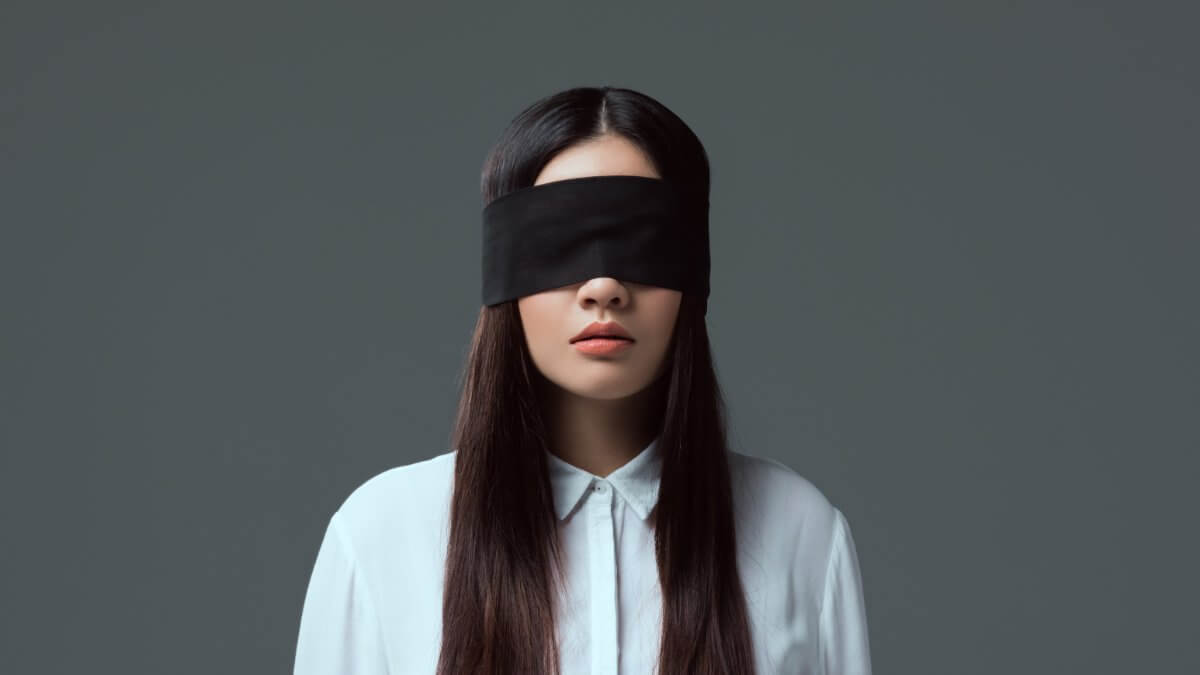
Home » Are You Breed-Blind?

Dog shows are venues that we create to showcase purebred dogs. They are where we come together openly to exhibit and discuss our breeds, to learn from each other. Dog shows are a giant exchange of knowledge, work, and effort. I’ve always felt they are the safest place for what we do as breeders, exhibitors, and judges.
In its purest form, a dog show is about the individual evaluation of a dog on the day. The performance, the condition, and the level of quality come into play, and they should be equally considered among all breeds. You would hope things would be fair. That you could just go to a dog show as a person with a great animal and be as competitive as the dog that’s been to 100 dog shows, without advertising, without ranking, and all that good stuff—but it’s not.
For example, a Golden Retriever that is placed First, based on the judge’s knowledge of the Breed Standard, is put ahead of a Red and White Setter. Both are being evaluated on how good that dog is for its breed. The rather typical Golden is most often placed above the out of the ordinary R/W setter. Well, as a rare breed person, I may see things through a little different lens. From years of experience, I know that the R/W Setter is better than most of the 49 Golden Retrievers entered at the dog show on that day, but the judge may not be as comfortable with the breed, its Standard or finer points, and as such prefers the “safe placement” of the familiar Golden. This is not uncommon in our sport. There are breeds that are SAFE to reward; a Poodle, a Springer, a Doberman, a Pug, a German Shepherd, and the list of popular breeds goes on and on. Many judges are just not secure enough to make hard choices these days.
Some judges are “breed-blind,” a term I borrowed from Juliet Clendenon (I always give her credit for introducing me to the term). It doesn’t matter how good that Red and White Setter is, every one of those Golden Retrievers is more palatable to the breed-blind judge because he’s more comfortable with the BREED. And that’s where we get lost as a sport. Some judges live in fear that they might be questioned about the entrant or asked to explain the appeal of the lesser-known animal, so they just don’t point to them. AND those of us with these breeds know it is hard to win with a dog when the judge may not even know what breed it is!!!
It’s interesting to me that this judge is looking for the same rather than the different. Same Ole Same Ole is SAFE. Safe in numbers and safe by popular demand. But as judges being educated and trained, we are taught that the one example who is different is often the one that’s better. The standouts are different from the same. The best one is unique. The unique examples of the breed are different because they are filled with so many of the correct breed details. These examples have won the genetic lottery for their breed. They are genetically gifted. They are closer to ideal. How many times do we say, “The one that stands out in the ring to be unlike the others is probably the one with all of the breed-specific traits the others are lacking?”
If you’re breed-blind, you’re not even looking beyond the comfortable (popular) because it’s so uncomfortable to go there. That judge may think, “I don’t understand the American Water Spaniel, I don’t know if it’s good enough. Is that Swedish Valhund any good? I don’t know, I’ve only seen five of them.” This judge would rather play it SAFE than stand up and stand secure for a breed that they may not have depth of knowledge in. In the end, it is a huge disservice to the breed and to the exhibitor to not have their dog rewarded based on a judge’s lack of experience. This is where your schooling comes in play as a judge. Do you have enough knowledge to reward all of these breeds fairly?
It’s the exhibitors’ responsibility to enter their dogs under the most open-eyed judges. I always felt that Dorothy MacDonald treated every breed equally and you had a shot. A lot of her generation in dogs are tremendously missed from a breeder’s standpoint and we have yet to replace them with judges who have the ability to treat, for example, the Russian Toy the same way as the Yorkie. I actually gave a Russian Toy the Group—and this is a breed that rarely wins on the Group level. The following days, I watched as the dog was placed behind other more common breeds of lesser quality. (He was often placed Fourth, a rare breed token). Yet this dog was a topic of discussion at ringside and at dinner. The judges were familiar enough with the breed to recognize him as being worthy, but they were unable to take the plunge to give him a First. They may have put him Fourth and thought, “Well, I know it’s good but is it really good or am I just thinking it’s really good?” It was safer for them to place it Fourth where they didn’t have to say, “Well, that’s the best Russian Toy I’ve ever seen!” Frankly, I believe that when you judge, you do ask yourself, “Is that the best one?” Then you ask, “Do I have the guts?” Well, I thought it was the best one I’ve ever seen until I see one better!
There are several judges I know who say, “Well, if I don’t do it, then who will?” When you come from Komondors or Sussex or Irish Water Spaniels, and you’re judging, because you’ve walked that path before you may be the only one with the guts to do so. You have to ask yourself, “If I’m not going to put that one First, who’s going to do it?” Well, I do it because the dog is worthy and because there have been times when I’ve been on that lead and thought, “You know, I should win over that Springer… I should win over that American Cocker.” Yet, I’d go Fourth.
As a judge, you have to be confident in your adjudication. You have to be well-versed, well-experienced, in the Group and in those breeds, and you have to know that it is safe to place the dogs as you’d like. No one will scream at you. (Well, maybe a disgruntled exhibitor here and there if you are doing it right!!!) You have to be secure enough in your own convictions. What I like, and where my priorities are, can be very different from someone else’s. But each judge has to have a working knowledge to make those decisions. It’s your ring, so do what you want—but do it with knowledge and purpose. If you’re good at what you do, you will do it consistently. You will define a classic type of animal, and you find that and reward it consistently so that it defines your criteria for the upper echelon of the breed. The breeders and the exhibitors will know that you know their breed. If you are random in your placings, they will know this too.
I think many judges are distracted by the rankings of a dog. It oftentimes feels as if judges are on a team with a campaign. They are supportive of a dog to win rather than remain independent. As a breeder, the ranking isn’t the validation; the ranking is the owners’/exhibitors’ decision to participate on a level where they’re ranked because, to them, it’s much more rewarding. I mean, sure it’s fun. A dog is shown all year because it’s fun; the people join together and they have a good time showcasing their dog to the fancy. But any dog on any day can be defeated by a better one, and you, as a judge, have to have the guts to do it. You don’t always step into the ring without prior knowledge—you come in with prior knowledge. You’ve experienced the dog multiple times in a year, but you’re seeing it fresh on a given day; a new bath, a new trim, a current coat condition, and current muscle tone. All of that is new, but the dog itself is somewhat familiar. You must make that decision based on today’s condition and performance.
There can be a lemming mentality in judging, where judging is done by ranking. One judge follows the masses and, weekend after weekend, the same dogs are winning. I have written about this before. It is and always has been an epidemic in the sport. These rankings are the general consensus of opinion of a collective group of judges on an animal who is shown often. It is a group opinion. For example, a less independent (or weak) judge sees the Group the day before. He can feel very comfortable putting those dogs in that same order. It is safe—even if he likes that Second Place dog better. But the judge is concerned that the First Place dog went Best in Show the day before and today he is going to place it Third in the Group. This weak and internal voice works against true adjudication. You have to be strong; you have to be independent. Judging is an independent sport. There are no pairs judging in this contest. It is your sport that day. You are the one making all those decisions. Sadly, I think people forget this. Judging dogs is not a weekend event with your friends where you all decide who the winner is. Only you decide. And so, as a result, I am not into the rankings. I have been super-successful as a breeder with dogs that have been well-ranked—and it’s fun to do—but it’s not as meaningful to the true breeder as having 40 years of breeding behind you. That’s your ticket. That’s your repertoire, a long-time commitment to a breed that has produced generations of quality. That’s more important than having one superstar Number One dog in the country.
Dog shows can be disappointing because the level of quality is often less that we hoped for. We hear this from judges. That’s why I try to do seminars, to elevate people’s ability and give them the confidence to try. I am always open to help anyone. For example, I had a wonderful English Cocker lady who showed to me recently. I don’t know her name. I don’t breed her breed, but she told me I’d said her, “You should breed this BOB dog to your bitch.” Two years later, she came back to me and was rewarded in my ring again. She asked, “Do you remember me?” I did not. She said, “This is the product of the breeding you told me to do.” This has happened to me a lot and I’m grateful, because it makes me happy that people are listening and willing to give it a try. To me, effort goes a long way and 2024 has been declared the Year of Effort. I want to see a lot of effort out of these dog people. I want better for everyone.
Forty years ago, I never could have imagined that I’d be where I am today. I mean, I am so beyond what I ever dreamt—and that’s through fate. Fate made a path for me and I walked it. I had lots of mentors along the way to listen to and learn from. I’m thrilled to have done it. The experiences I’ve had are beyond my wildest dreams. I never would have guessed that I could do what I’ve done, and it’s humbling to think that it’s possible. But I tell everyone, if it can happen for me, it can happen for anyone. It can be done. And I think there’s no question that people can get there, because I’m not that gifted. I’m clever and I have a good eye, and I have a good plan, and I have great genetics, but so do other people—and so can other people.
